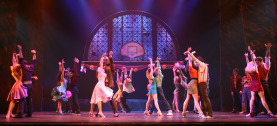is more Jack Nicholsons. Seriously.
 This revelation came in Monday’s New York Post, which said that a new memoir from Allegra Huston, Angelica’s sister, included a passage on Nicholson’s acquisition habits. “He
This revelation came in Monday’s New York Post, which said that a new memoir from Allegra Huston, Angelica’s sister, included a passage on Nicholson’s acquisition habits. “He
collected paintings to the point of obsession,” she wrote.
A little snooping around turned up more details. Nicholson apparently owns an eight-room
home, modest by Hollywood standards, on Mulholland Dr. that is stuffed with just part of his collection — not just on the walls, but stacked in unoccupied rooms. The rest is in storage. Among his paintings are works by Picasso, Magritte, Bonnard, Matisse, Bacon and Dufy. In late 2007, he told the Times of London:
“I just like art…I get pure pleasure from it. My grandmother was an amateur painter.”
And:
“I got involved in buying paintings when Diana Vreeland [the former Vogue editor] got me to an auction in England. Up came this beautiful Tiepolo drawing at Sotheby’s. I bought it for Anjelica Huston as a present. That’s how I got started.”
And:
“People look at an abstract painting and ask, ‘What’s it supposed to be? What’s the point?’ Hell, it’s a painting, that’s the point. It’s not supposed to be anything. Its job is to get you to look in a different way. That’s also what actors are supposed to do. Provide a stimulating point of departure for thought and feeling.”
Spoken like a true collector.


